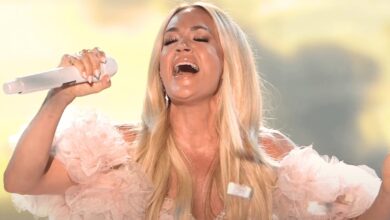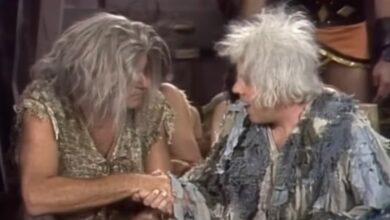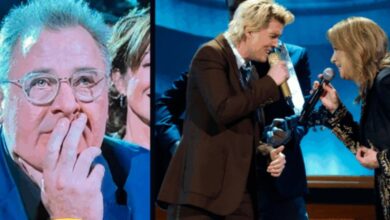Lesley Gore’s “It’s My Party” Ushers in a New Era of Teenage Pop Drama in 1963
Released in the spring of 1963, Lesley Gore’s “It’s My Party” quickly captured the ears and hearts of a young audience searching for a voice that mirrored their own turbulent emotions. The song stood out for its vivid storytelling and emotional immediacy, shooting straight to number one on the Billboard Hot 100. At a time when male artists dominated the charts, Gore’s heartbreak anthem offered a refreshing and relatable perspective from a teenage girl navigating love and betrayal.
Lesley Gore, born Lesley Sue Goldstein in Brooklyn and raised in Tenafly, New Jersey, was a high school junior when she recorded “It’s My Party.” Her polished yet earnest vocal style set her apart from her peers, conveying vulnerability without sacrificing strength. Discovered by producer Quincy Jones, Gore quickly became emblematic of the teenage experience in the early 1960s, presenting an image of poise that balanced the fine line between innocence and burgeoning independence.
The story behind “It’s My Party” is as compelling as the song itself. Written by the songwriting trio of John Gluck Jr., Wally Gold, and Herb Weiner, the track recounts the experience of a young girl whose birthday celebration turns tragic when her boyfriend, Johnny, is stolen away by another girl, Judy. The narrative’s simplicity, combined with its universal theme of teenage heartbreak, resonated deeply with listeners. Interestingly, the song was rushed to release by Quincy Jones after he discovered that Phil Spector was preparing to cut a competing version with the Crystals.
The recording session for “It’s My Party” was helmed by Quincy Jones, who at the time was relatively new to pop production but already showed a mastery of blending lush arrangements with pop sensibilities. The instrumentation featured bright horns, a driving rhythm, and a girl group-style backing that gave the track a rich, full sound. Gore’s vocal performance was remarkably mature, capturing both the sadness and indignation of the song’s protagonist with a clarity that immediately set her apart.
Upon release, “It’s My Party” became an instant sensation. It climbed rapidly up the charts and reached the number one spot in late May 1963, dethroning popular acts and securing Gore’s place in the pop firmament. The song remained on the Billboard Hot 100 for several weeks and found success internationally as well. Its universal theme and catchy refrain made it a radio staple and helped Gore secure a broad fanbase across multiple demographics.
Beyond its commercial success, “It’s My Party” had a profound cultural impact. It gave voice to the emotional highs and lows of teenage life in a way that was rarely acknowledged so candidly in pop music. At a time when young women were often relegated to passive roles in pop narratives, Gore’s delivery—equal parts sorrowful and defiant—provided an early glimpse into the more complex emotional portraits that would later dominate the music of female artists.
The success of “It’s My Party” propelled Lesley Gore into stardom virtually overnight. It led to a string of follow-up hits, including the sequel song “Judy’s Turn to Cry” and anthems like “You Don’t Own Me,” which further expanded her repertoire beyond tales of romantic heartbreak into themes of self-assertion and independence. Thanks to her early success, Gore was able to transition from teen star to respected artist, even as musical tastes evolved through the 1960s.
The song’s influence on the genre was significant, inspiring a wave of “teen drama” songs that explored heartbreak, betrayal, and resilience from a female perspective. Other artists and producers sought to replicate the formula that had made Gore’s song so successful: a relatable narrative, a catchy melody, and an expressive vocal performance. The emotional honesty that Gore brought to her work would pave the way for future singer-songwriters like Carole King and Laura Nyro.
Over the years, “It’s My Party” has been covered by numerous artists, from Dave Stewart and Barbara Gaskin’s synth-pop rendition in the early 1980s to modern interpretations that reframe the song’s emotional core. Each version, whether faithful or radically reimagined, has highlighted the track’s timeless appeal and its ability to speak to audiences across different eras and musical styles.
At the time of its release, Lesley Gore’s rise to fame was also emblematic of broader changes occurring within American culture. The early 1960s were a transitional period, and the music of young women like Gore signaled a subtle shift toward greater emotional authenticity and complexity in mainstream pop. Her success challenged prevailing industry assumptions about what audiences wanted to hear from female artists.
The legacy of “It’s My Party” remains strong decades later. It continues to feature prominently on oldies stations, in film soundtracks, and in retrospectives of early ’60s pop. Its simple yet powerful depiction of teenage heartbreak has ensured its place in the American musical canon, making it not just a song of its time but a timeless touchstone for listeners experiencing their first heartbreaks.
In evaluating its place in musical history, “It’s My Party” also stands as an important milestone in the career of Quincy Jones, who would go on to become one of the most celebrated producers of all time. The success of the track helped establish his reputation for crafting hit records that were not only commercially viable but artistically polished, laying the groundwork for his later collaborations with legendary artists.
While Lesley Gore continued to evolve as an artist and advocate, her earliest success with “It’s My Party” remained a career highlight, showcasing the blend of vulnerability, strength, and melodic excellence that would define her work. Even after her passing in 2015, Gore’s contributions to music—and the pioneering spirit she embodied for young female artists—continue to be celebrated.
Ultimately, “It’s My Party” endures because it captured something timeless and universal: the sting of betrayal, the public humiliation, and the resilience needed to move forward. In just a few short minutes, Lesley Gore managed to tell a story that millions could see themselves in, creating a pop masterpiece whose emotional resonance remains undiminished over half a century later.





